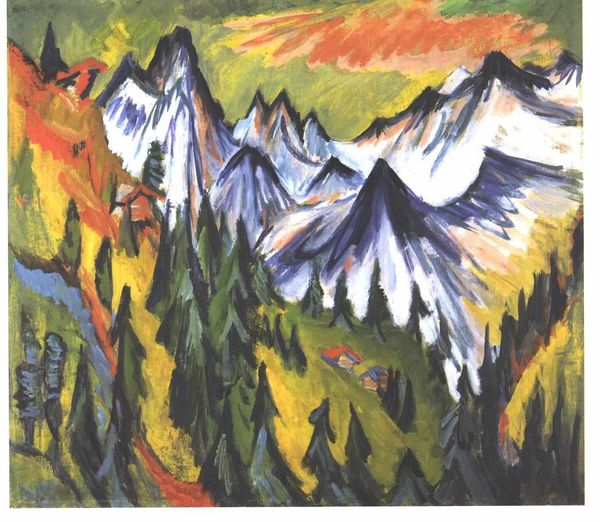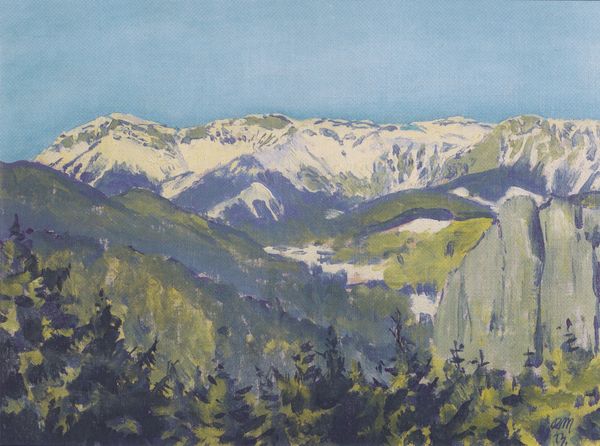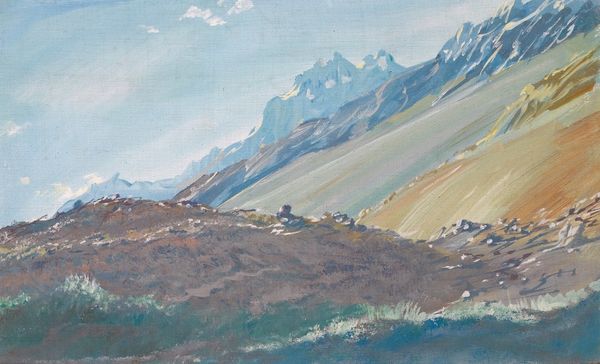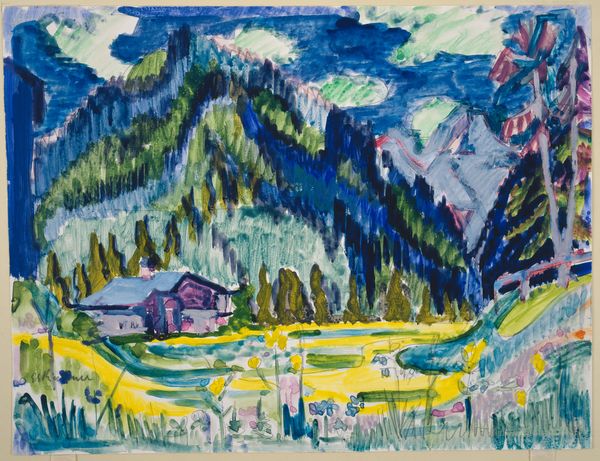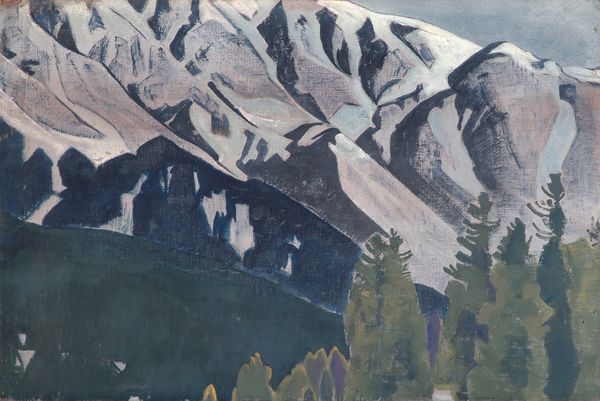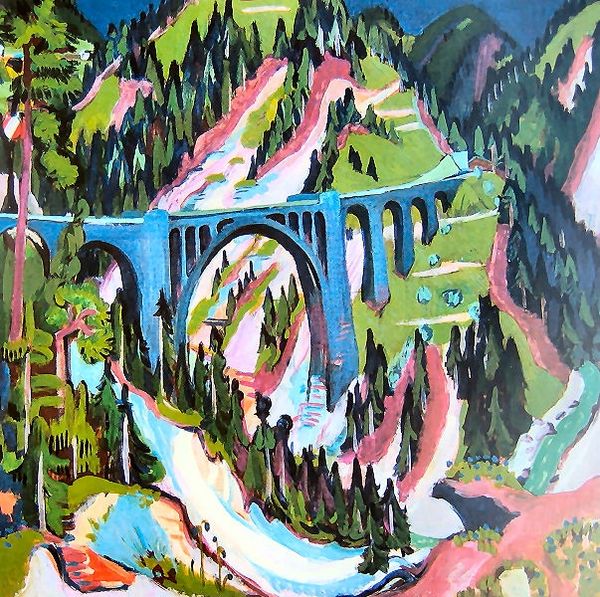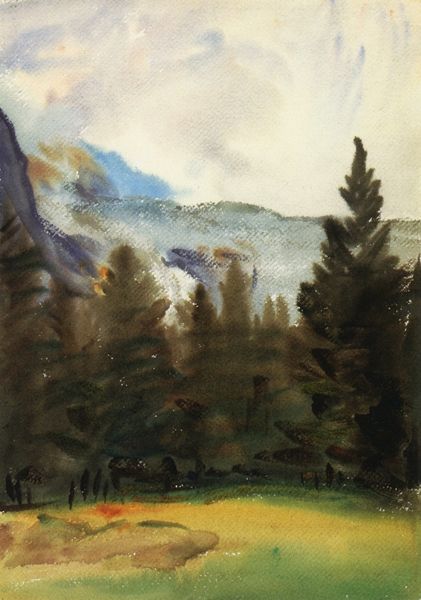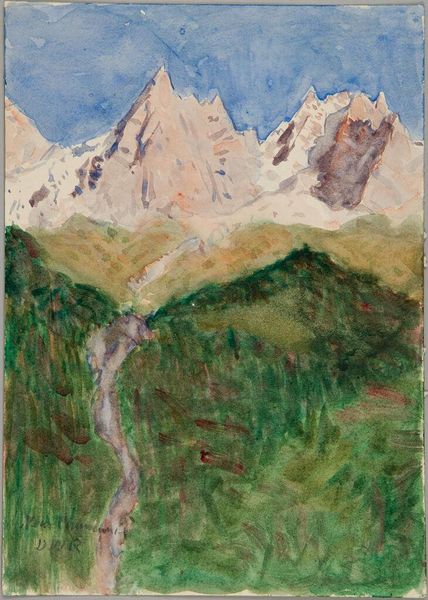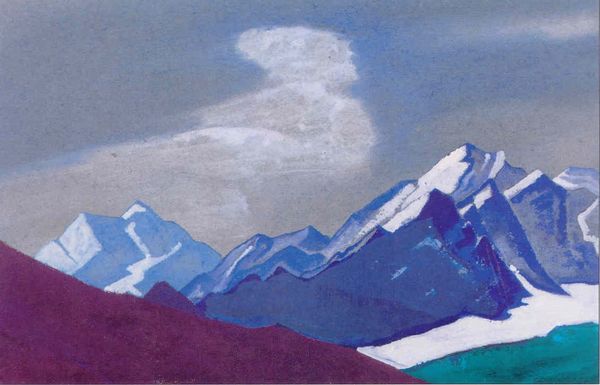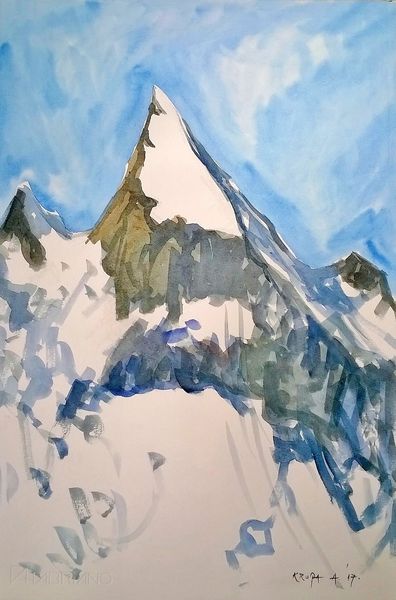
Dimensions: 36.5 x 49.5 cm
Copyright: Public domain
Curator: Let's discuss Ernst Ludwig Kirchner's watercolor, "Bridge in Landwassertal," created in 1919. It's an evocative piece currently housed at the Aargauer Kunsthaus in Switzerland. Editor: My immediate impression is one of almost violent dynamism. The color palette seems simple—blues, greens, and reds—but the execution…it's fractured, feverish, and captivating. Curator: Absolutely. We see Kirchner grappling with post-war anxieties here. After suffering a mental breakdown and undergoing treatment, Kirchner moved to the Swiss Alps. This landscape became his new subject matter. His service during the war deeply impacted his work as an artist and as a human. The bold use of color is characteristic of Expressionism and the artist's pursuit to capture the complexities of the human condition. Editor: And observe how the lines, though fluid as befits the watercolor medium, contribute to this tension. Notice the jagged peaks of the mountains. The bridge itself, a symbol of connection, is almost violently rendered. It hardly soothes with a gentle passage. It pushes the viewers. Semiotically speaking, even symbols such as bridges take a violent quality that relates to post-war disillusionment. Curator: Yes. The figures walking on the bridge could be interpreted as survivors navigating a landscape forever changed by trauma, and his return from a sanitarium. Kirchner certainly knew of these things. Editor: Trauma visualized, undeniably. One can feel the emotional burden carried by the artist, transferred directly onto the page with these bold washes of pigment. He masterfully conveys a state of mind using very deliberate arrangements. Look at how the brushstrokes mimic the forms that populate this natural space. This harmony between nature and human feeling elevates this artwork to a new type of perception of the human-animal symbiosis. Curator: It is remarkable how Kirchner managed to weave such personal experiences into what appears, on the surface, to be a serene landscape. Through Kirchner’s artistic practice we might have an insight to the lasting trauma endured by an individual experiencing this sort of trauma. Editor: It leaves one pondering how intensely personal the act of perception can be. It provides insight to ourselves too.
Comments
No comments
Be the first to comment and join the conversation on the ultimate creative platform.
